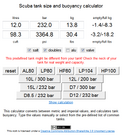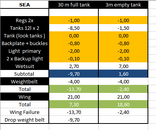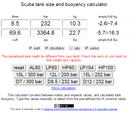The underlying concept is balanced rig, which means that, in the event of a wing failure, you can get to and remain on the surface. A thin wetsuit with a set of Al80s, or neutral steels like the little 72s, will work, because the rig has little negative buoyancy to begin with, not much gas weight, and the suit can lose very little buoyancy.
On the other hand, a set of steel 100s and a 7 mil wetsuit can be a mess, because the wetsuit may be able to lose 20 lbs or more of buoyancy, and the rig itself is quite negative from its materials, as well as having significant gas weight.
Risk also goes up as dives get deeper, meaning that having immediate redundant buoyancy becomes more valuable. Thus, very deep dives, even in warm water, might merit consideration of a dry suit, even if they are being done with aluminum tanks and stages.
The original discussions I read, years ago, about balanced rigs, did discuss the possibility of using a lift bag or SMB as redundant buoyancy, but I believe that whole idea has gone by the wayside, as it probably ought.
On the other hand, a set of steel 100s and a 7 mil wetsuit can be a mess, because the wetsuit may be able to lose 20 lbs or more of buoyancy, and the rig itself is quite negative from its materials, as well as having significant gas weight.
Risk also goes up as dives get deeper, meaning that having immediate redundant buoyancy becomes more valuable. Thus, very deep dives, even in warm water, might merit consideration of a dry suit, even if they are being done with aluminum tanks and stages.
The original discussions I read, years ago, about balanced rigs, did discuss the possibility of using a lift bag or SMB as redundant buoyancy, but I believe that whole idea has gone by the wayside, as it probably ought.







